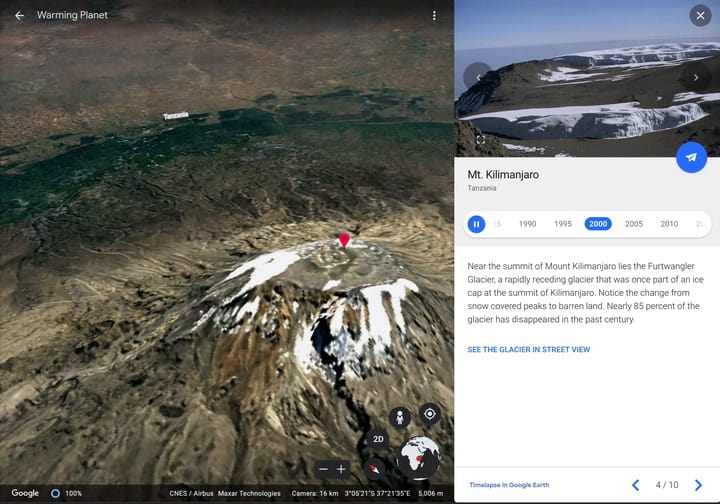
A new video feature on Google Earth app can pull up four decades worth of satellite imagery, showing how devastating climate change has affected the planet.
The glaciers, beaches, forests, whatever one has on their minds can be viewed in vivid details on how the world around is changing, The Associated Press reported.
On Thursday, the new feature is being touted as Google Earth’s most significant update in the past five years.
According to Google, the tool was a complex project, getting its information from 24 million satellite images taken every year from 1984 to 2020. The project was a collaborative piece with several government agencies worldwide, including NASA, the U.S. Geological Survey, and the European Union.
Carnegie Mellon University helped with the project as well.
Natalie Mahowald, an engineering professor at Cornell University and climate scientist, called the project a big success.
“This is amazing,” she told The Associated Press after watching a preview of the new feature. “Trying to get people to understand the scope of the climate change and the land use problem is so difficult because of the long time and spatial scales. I would not be surprised if this one bit of software changes many people’s minds about the scale of the impact of humans on the environment.”
Time-lapse satellite imagery has been used to compare and contrast the effect of the changing climate, and many parts of the world are changing. Most scientists agree that pollution is primarily produced by human activity.
Google Earth has 3 billion smartphone users who can witness melting glaciers worldwide, as well as disappearing forests, changing energy use patterns, and much more.
There will be a storytelling mode that will highlight 800 different places in 2D and 3D. Through YouTube, a Google product, videos will be available as well.























